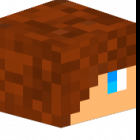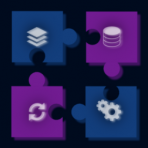- Sky
- Blueberry
- Slate
- Blackcurrant
- Watermelon
- Strawberry
- Orange
- Banana
- Apple
- Emerald
- Chocolate
- Charcoal
Leaderboard
Popular Content
Showing content with the highest reputation since 04/01/14 in Posts
-

MineOS, operating system
AetherNet and 15 others reacted to EliteClubSessions for a topic
MineOS is a GUI based operating system for the OpenComputers Minecraft mod. It has extensive customisation abilities as well as an app market to publish your creations among the OS community. For developers there is wonderful illustrated wiki with lots of code examples. List of main features: Multitasking Double buffered graphical user interface Language packs and software localization Multiple user profiles with password authentication Own EEPROM firmware with boot volume choose/format/rename features and Internet Recovery mode File sharing over the local n16 points -
1) Install 0.7.1: http://pastebin.com/LPb4FEv4 0.7.0: http://pastebin.com/2kG4V3tB 0.6.0: http://pastebin.com/bR33cXDU You can use internet card, and command: pastebin get LPb4FEv4 holo 2) What do you need a) Diamond Screen and Graphics card (for good resolution). Beginning from version 0.7.0 you can use a golden GPU card. Diamond processor (just faster; before OC 1.4 it's not important) c) 2 Golden memory planks. d) Internet card (to get program from pastebin) e) Hologram projector (to preview your creation) f) other parts, any levels12 points
-

Introducing "Lunatic"
kcinnaJlol and 9 others reacted to asie for a topic
No spoiler in the title. Just watch the video. EDIT: Apparently someone's ComputerCraft fork is more findable on Google than the original OpenComputers repository, so here's the official source code: https://github.com/asiekierka/lunatic8610 points -
I decided to make an editor with syntax highlighting, just for the fun of it. The name stands for "syntax highlighting editor", it's very unoriginal, but I'm bad at names To use it, run this command on OpenOS: pastebin get ZnwyunqL /bin/shedit.lua The color scheme was (sorta, I redid it later) copied from this paste. Features: Syntax highlighting! Indent on enter Line numbers Jump to line Hex colors are highlighted with the color they refer to (example: ) And probably more in the future if I need them.. Screenshot: Any recomm7 points
-

OpenSecurity 1.7.10/1.10.2
John The Cooling Fan and 6 others reacted to Michiyo for a topic
Hello all, I'm here to announce the release of OpenSecurity! Build Status: Downloads: https://minecraft.curseforge.com/projects/OpenSecurity Change Log: http://ci.pc-logix.com/job/OpenSecurity/changes Source: https://github.com/PC-Logix/OpenSecurity OpenSecurity adds Items and Blocks that are useful for the security of your worlds or bases. Documentation has been moved to GitHub: https://github.com/PC-Logix/OpenSecurity/wiki7 points -

Big Reactors Grid Control
Adorable-Catgirl and 5 others reacted to XyFreak for a topic
Hi everyone. A while back I promised more releases, so here you go: Big Reactors Grid Control is a multi reactor/turbine controller for Big Reactors and Extreme Reactors. Mission goal: Be the best big reactors controller there is. Nothing more, nothing less. First things first - here's the website: https://tenyx.de/brgc/ NOTE: Due to a bug with OpenOS 1.7.4, BRGC will not work with that version. Please update to 1.7.5. Main features Active and passive reactor support Support for multiple reactors and turbines at the same time (n:m) Control6 points -
What is STEM? Did you ever want to have a linked card, but without this pair-to-pair limitations? Well, you have internet card. And that is already half of the solution. The other half is to use Stem. Stem is a message transmitter for your OpenComputers devices with internet cards. Using a small OpenOS library you can use Stem to send and receive messages. Unlike the standard `modem` component, Stem-messaging uses not addresses, but `channels`. You can send messages to any channels, and you can subscribe to any number of channels to listen for messages from them.6 points
-
BIG UPDATE! I've worked out some updates and a new visual editor for the gui system. To use the gui just download http://pastebin.com/Dfgc6z0T to a computer as /lib/gui.lua and try your best. If you don't want to fight with the placing of elements on the screen, then you want to use the visual editor. It's alpha state, but i hope it will make no errors. The editor will create a full lua code as frame work for your own program in resolution 80x25 like for a tier 2 screen. But you need a tier 3 screen to use the editor it self. The program you can run then on a ti5 points
-
https://minecraft.curseforge.com/projects/openpython https://github.com/EcmaXp/OpenPython OpenPython makes micropython available on OpenComputers. micropython is Python for embedded devices and is different from CPython. Currently, micropython is partially compatible with Python version 3.4 as of October 2018. Features include: - Fully persistable. - Runs in a sandboxed environment and does not require a separate native DLL. - Supports virtual file system. - It can call other components and supports Lua architecture's UserData. Limitations include: - The fi5 points
-

OpenScreens
John The Cooling Fan and 4 others reacted to its_meow for a topic
OpenScreens for Minecraft Forge 1.12 to 1.12.2 OpenScreens adds more display options for OpenComputers. Curse Link: https://minecraft.curseforge.com/projects/openscreens Holo Screens Holo screens are floating displays with adjustable size and color. Hologram projector model and texture by ZefTheFox Right clicking a holo screen with a dye will change the background color. Right clicking the sides with an empty hand while crou5 points -

Tank Display Program | now with energy and essentia too !
BrisingrAerowing and 4 others reacted to Nexarius for a topic
This program can display the contents of tanks on a big screen with a colored bar that can dynamically change its size. It can show up to 256 128 64 different liquids which are sorted from highest amount to lowest. 5x8 is the optimal size for the screen. Multiple tanks with the same liquids are automatically added together and empty tanks are ignored. This display is split into 2 programs. 1) Server - this receives the tank information and displays it 2) Client - this has the adapter with the tank controller (you can have as many as you like) optimal screen sizes5 points -
Features: FlatScreen Panel frameless screen which can be configured to be "rotated/tilted" on the x/y axis and can render transparent (they work as normal Screens, Touchinput will be improved in the final release) CardDock external housing for OpenComputer Cards which can be bound to any machine in the Network Cases additional Tier3 computer cases from ZefTheFox Download on curseForge for Minecraft 1.12.2 https://minecraft.curseforge.com/projects/ocdevices5 points
-

Platformer game on OpenComputers
Fingercomp and 3 others reacted to Zen1th for a topic
This is a working clone of Super Mario Bros. (with some missing features ). It was made thanks to the VRAM buffers feature (only available in experimental builds), the game runs quite smoothly and uses the Computronics Sound Card to play music on the same computer. It loads sprites from .bmp files, levels from Tiled (a free level editor) .json file and music is in some custom format that can be converted from MIDI files. This makes the game quite easily moddable. Source code4 points -
Program and library for building GPS network. https://github.com/DOOBW/OC-GPS Download: wget https://raw.githubusercontent.com/DOOBW/OC-GPS/master/usr/bin/gps.lua /bin/gps.lua wget https://raw.githubusercontent.com/DOOBW/OC-GPS/master/usr/lib/gps.lua /lib/gps.lua The functionality is the same as in the ComputerCraft. Additional command "flash" allows to upload firmware to EEPROM. When the coordinates are precisely determined, when flashing the position of the microcontroller can be omitted - at the first start it will determine its position from neighboring sate4 points
-

GUI: extremely fast advanced interface library
Adorable-Catgirl and 3 others reacted to EliteClubSessions for a topic
This is an object-oriented library, the main priority of which is the maximum possible performance. It works on the double buffering concept, it has a lot of widgets, animations and custom event handlers support. All programs from the screenshots above are implemented with its help. If you want to develop a fast and beautiful program in just a few lines of code without butthurt - then this library is made for you. Detailed illustrated documentation, installation methods and tons of practical examples are available at: https://github.com/IgorTimofeev/GUI4 points -

Guide to the Sound Card
ZefTheFox and 3 others reacted to Fingercomp for a topic
The sound card is added by Computronics, a wonderful addon for OpenComputers. There are a few who actually know what it does. Even less people are able to use it. No one dares to understand how it works, or so I hope. Anyway, it appeared a few years (?) ago, and is still mostly undocumented. There is a page in the in-game manual, which fails to explain how great the card is. Of course it does! It has a heap of different methods, which you can use to cast many crazy magics to make the sound card sound, and it's impossible to teach someone to do magic by reading a single page. OK, I'm4 points -
I present you a program for a robot that allows you to mine ore without going down into the caves. Robot, using a geolyzer, can find and mine ore. All features are not yet implemented, so I ask you to test and inform me about a bugs. Requirements: Computer case (tier II or III) Inventory Upgrade (more the better) Inventory Controller Upgrade Hard Disk Drive EEPROM with Lua BIOS Geolyzer RAM (tier I or higher) CPU (any) Hover Upgrade (tier I) Diamond pickaxe or equivalent tool Optional: Crafting3 points
-
There is a Github organization named OpenPrograms which a couple of us use to share our OpenComputers related programs. Feel free to have a look, you may find something useful there! If you wish to contribute / have a repository in that Organization, just ask - either here or on the IRC. OpenPrograms on Github The OpenPrograms program list3 points
-
SGCX - SGCraft Stargate Controller
MeltingBrain and 2 others reacted to IlynPayne for a topic
SGCX - SGCraft Stargate Controller Stargate controller based on GML library. Showcase: Installation steps: First download the package manager that will be used to download the application and all required dependencies: wget https://gitlab.com/d_rzepka/oc-equipment/raw/master/installer/arpm.lua Use the package manager do download SGCX: arpm install sgcx Run SGCX with an additional argument - init. This will allow you to pick a stargate interface address from list. It is required only during the first star3 points -
Ever needed real-world time in OpenComputers? I did today, so I did something about it. realtime realtime is a set of libraries and protocols designed to let you synchronise your computers with the real world, and includes: The realtime library, for taking and keeping time. The realtime-sync daemon, for synchronising your realtime library with the real world The realtime-relay daemon, for synchronising your realtime across the local network. All of these can be downloaded via oppm, or from the Minitel GitHub repository. Additionally, all of these come w3 points
-

Drone usage?
krakodeel and 2 others reacted to Fingercomp for a question
Of course there is. Assembling a drone with a leash upgrade produces a drone that can transport cows, horses, sheeps, and pigs. Like this: Or... like this: Besides, drones are entities. They move in straight lines; they don't get stuck in the fence and can actually enter a house through a door. They move pretty fast — about 6 blocks a second (robots are at least 2 times slower). Drone's movement is asynchronous, so the machine can execute some other code in the middle of the flight. Drones can fly above the block height limit. The screenshot above was made while enjoying th3 points -
This BIOS allows you to choose the boot device by either using the arrow keys or clicking/touching the monitor. When using the keyboard use Enter to boot, when using clicking/touching click an unselected entry to select it, click a selected entry to boot it. If there is only one bootable medium, that medium is autobooted. The default selected option is the last booted device. This supports booting from filesystems, using /init.lua as an entry point or from drives(HDDs or Floppys in unmanaged mode), by loading code from the first sector until the first \0 character appears a3 points
-
OpenOS has absolutely proper pipes now, such as those you invoke with `cat file | grep foobar`, and a kick butt threading library (read https://ocdoc.cil.li/api:thread ) As for virtual components? No, there is nothing built into OpenOS for virtual components, but gamax92 has written a nice vcomponent library you can add via oppm, `oppm install vcomponent` Plan9k is retired, to be honest. It was ahead of its time, but is now outdated. OpenOS is faster, lower memory, has gobs of great libraries, super awesome command line parsing, and is ACTIVELY developed. I might be biased....3 points
-

make opencomputers processors faster
Izaya and 2 others reacted to Fingercomp for a question
Please calm down. There are some component methods that block the computer for a tick when called, yes. Such methods usually interact with the world. For example, a transposer allows to transfer items between invetories by calling the transferItem method, which takes a tick to execute (so you get up to 20 stacks/second). On the other hand, there are a lot of direct methods, which can be called several times per tick. For example, the GPU's methods are direct. And the processor (as well as RAM) determines how many direct calls are allowed per tick. I think T2 T3 setup allows you to ca3 points -

Fuchas, a powerful operating system
Adorable-Catgirl and one other reacted to Zen1th for a topic
Fuchas One of the best OSes (as said by me) Fuchas in a Nutshell Fuchas is revolutionnary in that it uses drivers instead of component access and support UAC (with separate permissions!) ! It's the end of the era where the program needs to maintain integration with different components, the OS now does it! The driver library will try automatically choosing the best driver, but it can be configured by user. Meaning programs adapt to components with no effort (e.g. Computronics cards) A feature of Fuchas is security. If you do not trust a program, you can control permissions. Each2 points -

[WIP] NetCoin, a fully working cryptocurrency made for OpenComputers
kcinnaJlol and one other reacted to Juanan76 for a topic
What's Netcoin? NetCoin is a cryptocurrency designed for OpenComputers, a Minecraft mod that adds computers in the game. It follows Bitcoin's original philosophy: a completely decentralized network of nodes, each one maintaining a ledger with everyone's transactions, grouped into blocks that miners need to create solving the proof-of-work (PoW). What's the crypto behind it? It uses Elliptic Curve Digital Signature Algorithm (ECDSA) to sign transactions and SHA-256 as a PoW. Cryptographic functions are not implemented by software, but OpenComputers provides a component (Data Card) that provide2 points -
Hey! I'm asie, and while I'm not an official certified OpenComputers developer, I contribute to the project from time to time. However, for a long time, I've had some types of patches in the pipeline that couldn't quite reach the upstream - fixes and changes like: a screen renderer rewrite, with major performance boosts; updates to JNLua and LuaJ, fixing bugs and significantly improving performance; Lua 5.4.0 support. For the purpose of testing these changes as a way to see if they are ready for mass adoption, I've created a fork of OpenComputers called OC-Staging. It2 points
-

For anyone who would like to know what colors a tier 2 display can display.
bioscreeper and one other reacted to coolmax10 for a topic
2 points -

KestrelOS - Safe and powerful Windows-alike OS
Nath_SoM and one other reacted to MeltingBrain for a topic
KestrelOS GUI-based, Windows-alike, highly customizable, and safe Operating System for common pourposes What's the major GUI-based OS currently available? The amazing system created by Igor, called MineOS (I'm sure everyone by now knows about it). Igor's system is based on OpenOS, that looks like MacOS and is by itself the most amazing system released yet, with all sorts of programs and even 3D libraries which is mind blowing. So why create yet another GUI-based system? There are several reasons why I decided to take on this journey. First of all, the m2 points -

Bundle - allows to use multiple filesystems as a single one
Fingercomp and one other reacted to TetraSource for a topic
I just finished the first version of bundle - a rc application which virtually merges multiple filesystems into a bigger one. You can use it whenever a RAID full of tier 3 HDD isn't enough for your needs. On the picture above, for example, you can see 10 RAIDs with 30 tier 3 HDDs which yield a virtual HDD that can store over 200MB of data. You can also use filesystems of different size and create files bigger than any of the used filesystems since bundle is capable of storing a file on multiple HDDs. If you encounter any bug, please report it on my github repository. Also check out the wi2 points -
Hi, now i'am getting complicated :-) Here's my security system. It's based on opensecurity and oc. ------------------------------------------------------------------------------------------------------------------------------- What's needed? The server Start it before starting any door computer or the card writer system. The server will handle all user accesses. The card writer This is the main system. It's with gui to setup all users. It needs an opensecurity card writer connected. You can setup new user, edit user or delete user. A user can be blocked to stop him usi2 points
-
Hi all! I mentioned this in IRC but realized I should probably post it here as well. I made a new architecture that runs WebAssembly. It’s available here on CurseForge.2 points
-

uncpio - A simple CPIO extraction utility
Fingercomp and one other reacted to Adorable-Catgirl for a topic
uncpio is a rather simple binary CPIO extractor (File begins with 0x71C7 or 0xC771, made with cpio -oHbin). To acquire uncpio, run pastebin get YbrVjRwa /bin/uncpio.lua To use, make the directory you'll be extracting your CPIO archive to, cd into it, then run uncpio path/to/your/file.cpio And it will extract to the current directory. Currently only works in OpenOS, as far as I know.2 points -

tacti OS window pased windows 7 expired
anton3312578859 and one other reacted to Ta©ti Tac0Z for a topic
sence i saw igor Timofeev's mineos i was thinking if it was posible to get those static windows to move and infact there is: welcome to the first showcase of the (really un-creative named) tacti OS: as you can see it figtures moveable, sizeable, and interactive windows infact all programs running in the OS will be windowed! useing my easy-to-use windowLib and windowed-program-api i'll happyly resive any feedback (download link avalable in the below posts) (also its gonna happen anyway so come with those grammer currections poeple, i can take it)2 points -

IRC library
AetherNet and one other reacted to Fingercomp for a topic
There was no IRC library for OpenComputers, so I've made one. Here's a demo bot that uses it: local com = require("component") local event = require("event") local thread = require("thread") local gpu = com.gpu local irc = require("irc") local events = irc.events local env = setmetatable({ irc = irc, events = events, }, {__index = _G}) local client = irc.builder() :connection { host = "irc.esper.net:6667", throttling = { maxDelay = 2, maxThroughput = 5, }, } :auth { nickname = "oc-finger-irc", username = "fingercomp", realname = "OpenComput2 points -

vTunnel - TCP-based Linked Card Emulator
Adorable-Catgirl and one other reacted to Izaya for a topic
vTunnel can be used to add bridging over the internet to any existing OpenOS software that uses linked cards. Despite originally being written for Minitel, vTunnel implements a fully-functional linked card emulator and a server that will run under most unix-likes (OpenBSD is currently somewhat flaky, Linux is recommended). You can peruse the page on Github, for documentation and protocol information. Install it with oppm: oppm install vtunnel Additionally, you can read the documentation in-game with man vtunnel2 points -
This program enables you to make servers useful like IRL web servers. Client Minimum requirements relay network card internet card apu Server Minimum Requirements; Wireless network card Configured serverside program Put your paste code in the server program or else it will say Hello. I did this cause nobody else had and I thought it would be useful Server paste code: B7b27pc2 Browser paste code: vkL422Sz I am new to OC and this is my first program2 points
-

nexDHD - SG-Craft Stargate Control Program
PixelgamerX32 and one other reacted to Nexarius for a topic
Update 3.0.0: I've added secondary screens to make your control room cooler.2 points -

Tank Display Program | now with energy and essentia too !
CptMercury and one other reacted to Nexarius for a topic
And just to push it over the top into the rediculous area I've doubled it again to 256! That should be enough for forever. (I even had a lot of trouble coming up with so many for testing)2 points -
THIS MOD IS NO LONGER SERVICED, PLEASE DOWNLOAD THIS INSTEAD!!! A while ago there was a post on here about someone making custom cases, I am not that person but I do have a release. This may be improved upon in the future but as of right now it is in a completely usable state. This is a client side replacement for opencomputers. Do not use with normal opencomputers. This will be updated to release versions of OC and will not be for 1.7.10 Theoretically this should be usable as a client connecting to a server with normal opencomputers, this was not tested. To2 points
-
that is a ComputerCraft disk drive, not the OpenComputers disk drive2 points
-
While it is not possible to tell you exactly what to do instead, here are a few things you should've done a little bit differently to make this more pleasant and helpful for everyone: Your title: "make opencomputers processors faster". You are asking a question in your post which you want answered, why not make that the title instead: "How do I increase or remove the limits of the CPU/RAM?" This makes it easy at first glance for everyone to see what you try to accomplish "make [...] processors faster" sounds like you are giving someone the command to do so, which is n2 points
-

Server based password door lock
webbster64 and one other reacted to RokutheBasiliskTamer for a topic
This is a simple door opening script that requires a password to be entered. That being said it took me a ridiculously long time to work out all the bugs. It works by taking an input from one computer and sending it to another to check if the password is correct. This makes it much harder to simply look at the file to check what the password is. It also now has the ability to automatically encrypt your password if you have a T1 data card along with the server asking you to input a password on the first run. These ideas came from the user RandomRedMage Requirements: At least 2 compu2 points -

Nanomachines, son. Control them, don't let them control you. :D
Memelord420 and one other reacted to RandomRedMage for a topic
I haven't been here in a long while, mostly because life, the universe, and everything has been getting in the way of fun. Also, I'm usually an eternal lurker, but hey today I have a small contribution, As I have been playing I wanted a gui interface to easily turn on and off the different nanomachine flags. So I built a small application to do it. Right now it is super basic, but I hope to flesh it out a bit more and give it proper displays ect, so I dont have to do things as janky as I did here. Long story short, I'm bad at lua/coding/scripting in general, so its a little hamfisted and2 points -
Read, "where the call takes at least one server tick" Here: https://github.com/MightyPirates/OpenComputers/blob/f5c19e9e7e0006d3403c7bf0b44dfb970cee8a2f/src/main/java/li/cil/oc/api/machine/Callback.java#L43-L592 points
-

MagicaVoxel .vox converter for print3d
Fingercomp and one other reacted to Krutoy242 for a topic
Sorry for my English, im just Russian. http://codepen.io/Krutoy242/full/xGOgJG/ This converter allows you to open .vox files from awesome MagicaVoxel program and convert them to format for print3d program. Usage Download and open MagicaVoxel. Make model of your dreams. Save it. Open file in my converter written on JavaScript, and it will instantly generate chunks from model and show result, ready to copy-past in OC file for printing. Converter have options: Split to states will split your model in two by X coor2 points -

The thread about bragging and special thingers
Sangar and one other reacted to MaximilianVINCENT for a topic
I would like a Special Thinger™ as well. I have started and kept up a series of tutorials for OpenComputers, adding sorely needed documentation. Been active in finding bugs and suggesting features. I regularly check Reddit's FeedTheBeast subreddit and include information and assistance about OpenComputers where relevent. Do the same on these forums. Also really proud of my CompressCobble program. IGN is StoneNomad, requested color is 205 197 191: seashell 3 according to http://cloford.com/resources/colours/500col.htm2 points -
I want a Special Thinger ™! Author of OpenPrinter, and OpenLights with 600+ and 200+ downloads respectively. http://www.curse.com/mc-mods/minecraft/225127-openprinter and http://minecraft.curseforge.com/mc-mods/225225-openlights, I also contributed a bit to the IRC program OpenPrinter adds Text printers and scanners to the game, and OpenLights adds a colorable light block. I guess for color 255 0 0 (assuming that's Red IGN is MichiyoRavencroft Thanks, looking forward to my Special Thinger ™2 points
-

Hologram Editor
Cool_boy_men and one other reacted to Kodos for a topic
With the addition of 3D Printers, I'd love to see this expanded upon, and used as a 3D Print preview and creation system2 points
Announcements
-
Newsletter







